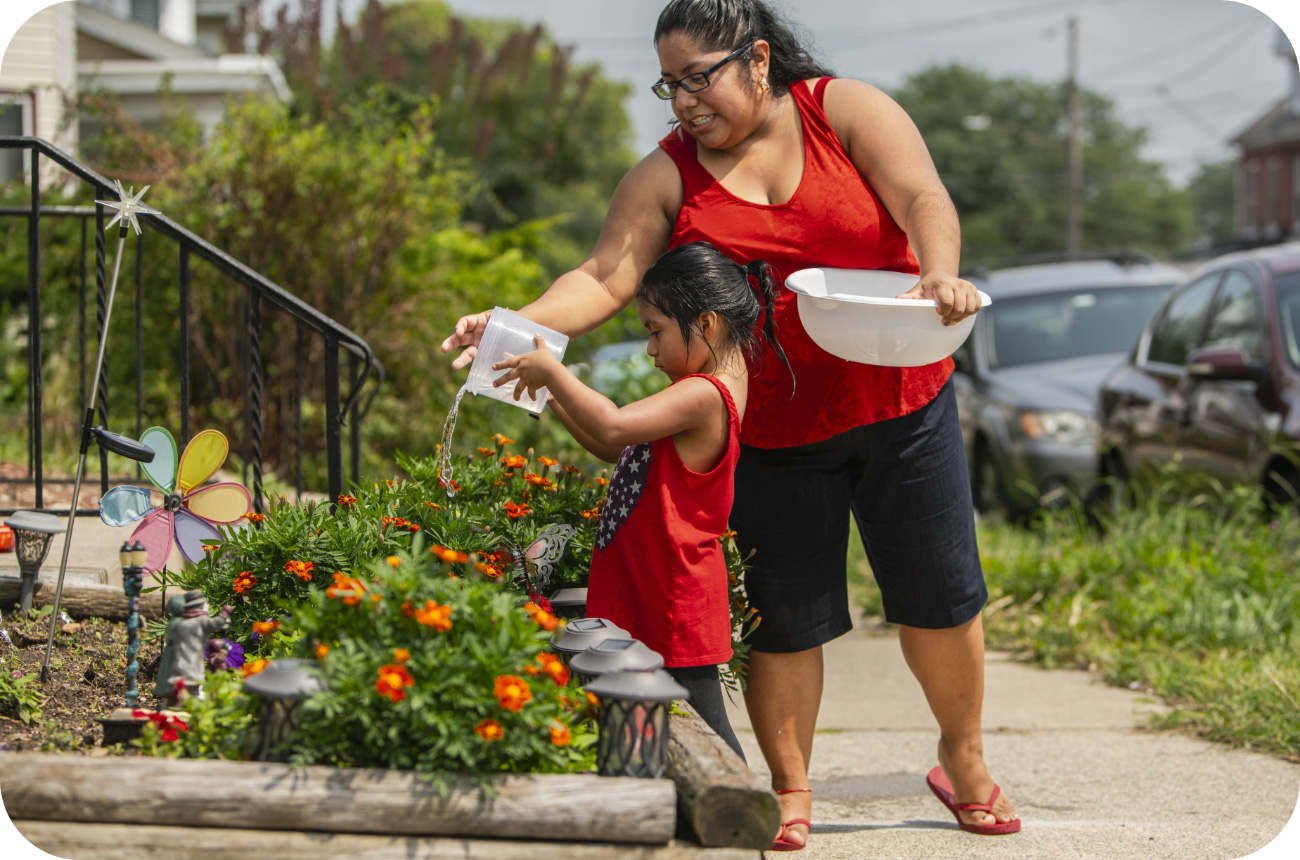
- Home
- About Us
- Environmental, Social, and Governance (ESG)
- Social Impact
- The Housing Journey
- The Latino homeowning journey
The Latino homeowning journey
This researched Housing Journey identifies distinct obstacles that may affect Latino consumers throughout their homeownership experience. You’ll also be able to learn about solutions we’re creating to help address these barriers every step of the way.

Challenges
Nearly one in four Latino homeowner households
lost their homes to foreclosure from 2007 to 2013.
Predatory lending practices & housing trauma
Latino homeowners experienced the highest rates of foreclosure during the financial crisis. As a result of this or other housing trauma, they may have doubts about purchasing a home.
Reid, et al., 2017
Language barriers and immigration status are major obstacles to accessing resources
such as homeless services and federal housing assistance.*
*Based on a case study of Hispanic families in Philadelphia, PAObstacles to assistance access
Other challenges include mistrust outside the Hispanic community and fears of deportation and public charge (penalization of immigrants for using public benefits).
Aiken, Reina, and Culhane, 2021
Fannie Mae actions
- Expanded Financial Capability Coaching & HUD-approved counseling
- HomeView® (available in English and Spanish)
Challenges
$379
in additional closing costs
Hispanic consumers pay proportionally larger closing costs
Hispanic low-income first-time homebuyers pay a median of $379 more than their non-Hispanic counterparts.*
*Calculated as a percent of the purchase price of the home.
Fannie Mae Closing Cost Study, 2021
of Hispanic mortgage application denials are due to debt-to-income ratio.
Fannie Mae calculations using 2020 HMDAHousehold financial situations are barriers to being approved for a mortgage
Hispanic renters’ self-reported top obstacles to getting a mortgage are insufficient income (34%) and insufficient credit history (33%).
Fannie Mae National Housing Survey, Q4 2021
Fannie Mae actions
- Pilot positive rental payment reporting across the multifamily industry
- Closing costs concessions and attorney opinion letters
- Special purpose credit programs
Once you have purchased a home, you will need to be able to afford to keep up your mortgage payments and other homeowning costs, maintain your home in good condition, and be prepared for unexpected emergencies that may come up. Latino homeowners are more likely to pay higher monthly mortgage payments and have less earnings stability due to more gig and informal work.
Challenges
have used alternative financing for a home purchase.
High-cost financing
Latino borrowers are more likely to leverage alternative high-cost financing, therefore paying more money to finance their homes over time.
Hispanic borrowers pay higher interest rates over the long term
due to underutilization of refinancing.
Less likely to refinance to gain more favorable loan terms
Hispanic borrowers are less likely to refinance their mortgages during periods of falling interest rates, even after controlling for important factors like credit scores, equity, and income.
Gerardi, et al., 2020
Fannie Mae actions
- Expanded counseling services to renters and borrowers facing hardship
- Special purpose credit program home retention features
- Fair servicing best practices
- Valuation modernization
Fannie Mae actions to help diversify the housing industry
We are pushing our company and the housing industry to better reflect the true diversity of our nation and communities we serve. Our innovative programs aim to grow a more inclusive housing sector for renters, homeowners, lenders, borrowers, and our employees.
- Future Housing Leaders® — Attracts more college students to positions across the mortgage and housing industries.
- Appraiser Diversity Initiative — Encourages and places more people of color in the real estate appraisal profession.

Jessica Brown, Appraiser Diversity Initiative

Read next: The Black homeowning journey
Learn about distinct obstacles that may affect Black consumers throughout their homeownership experience.

Knocking down barriers
At Fannie Mae, we’re changing the way we do business together to ensure an affordable, inclusive, and accessible housing market. Visit our Progress with Purpose page for a broader look at our efforts.
Business Partners
Homebuyers, Owners, & Renters
- Educational Resources
- Credit Basics
- HomeView Homeownership Education Course
- HomePath - Search for Homes
- Make Your Rent Count
